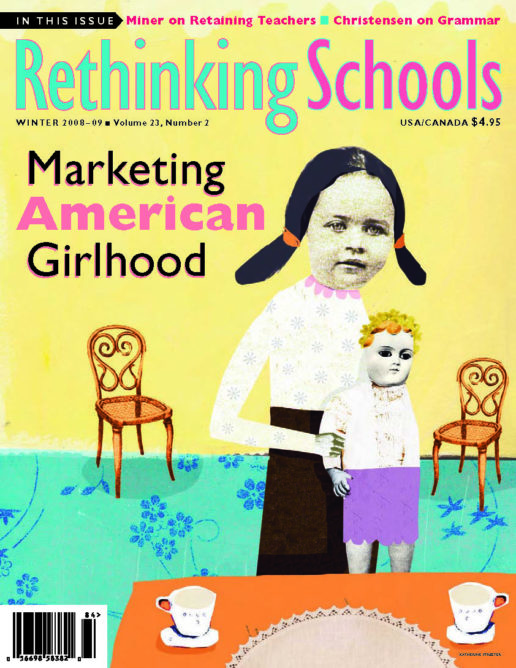Preview of Article:
10 Quick Ways to Analyze Children’s Books for Ableism
Prejudice by able-bodied and able-minded people toward people with disabilities
Illustrator: Brucie Rosch
Literature helps children understand themselves, their peers, their communities, their histories, and their world; the messages within can last a lifetime. In Rethinking Our Classrooms: Teaching for Equity and Justice, the Council on Interracial Books for Children (CIBC) warned that books can also expose young people to powerful racist and sexist attitudes that “gradually distort their perceptions until stereotypes and myths about minorities and women are accepted as reality.” Young people are also exposed to “ableism,” Thomas Hehir’s term — prejudice by able-bodied and able-minded people — that distorts perceptions of people with disabilities and helps maintain biases and myths about disabilities.
Although an estimated 20 percent of people in the U.S. have one or more type of disability, there are disproportionately few children’s picture books about people with, or addressing the issue of disability. According to Nina Christensen the limited number of books depicting disability increases the power of the few that are available: the dearth creates a tendency to uncritically promote any books with messages about disability. If we believe the role of schools is to confront societal biases, teach for equity and justice, and create hopeful glimpses of the kind of society we would like, we need not only to equip our classrooms with children’s literature that depicts disability, but also to find books that are of high aesthetic quality and accurately illuminate disability experiences. The stakes are high, because the way characters with disabilities are portrayed — what is said (and pictured) as well as what is not said (or pictured) — forms a hidden curriculum that has a powerful impact on how young people perceive disability. In “10 Quick Ways to Analyze Children’s Books for Racism and Sexism,” the CIBC advocated showing children how to detect racism and sexism, and provided 10 guidelines for critically evaluating children’s literature. We have adapted these guidelines, incorporating criteria from The Schneider Family Book Award that honors authors or illustrators for books embodying artistic expression of the disability experience.

